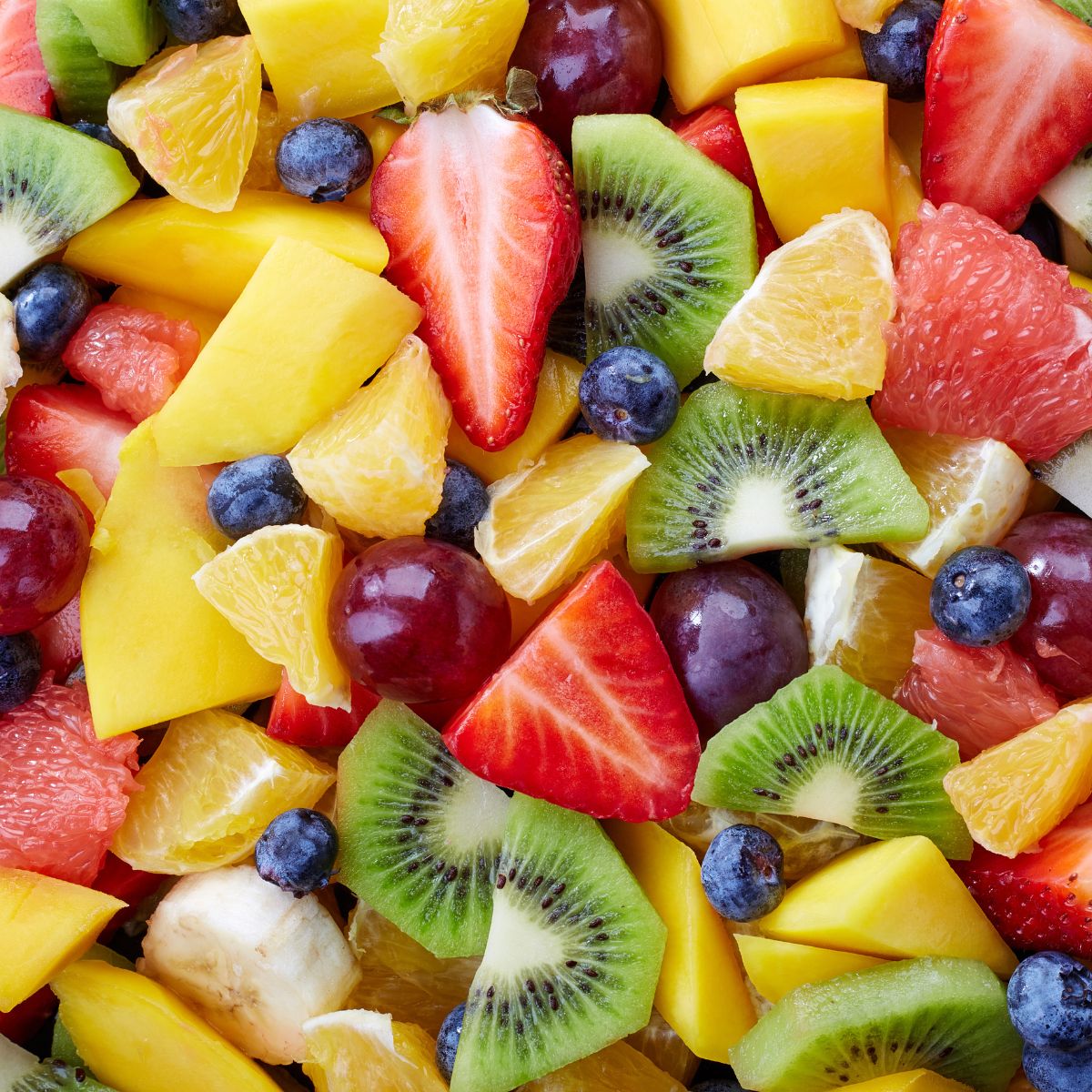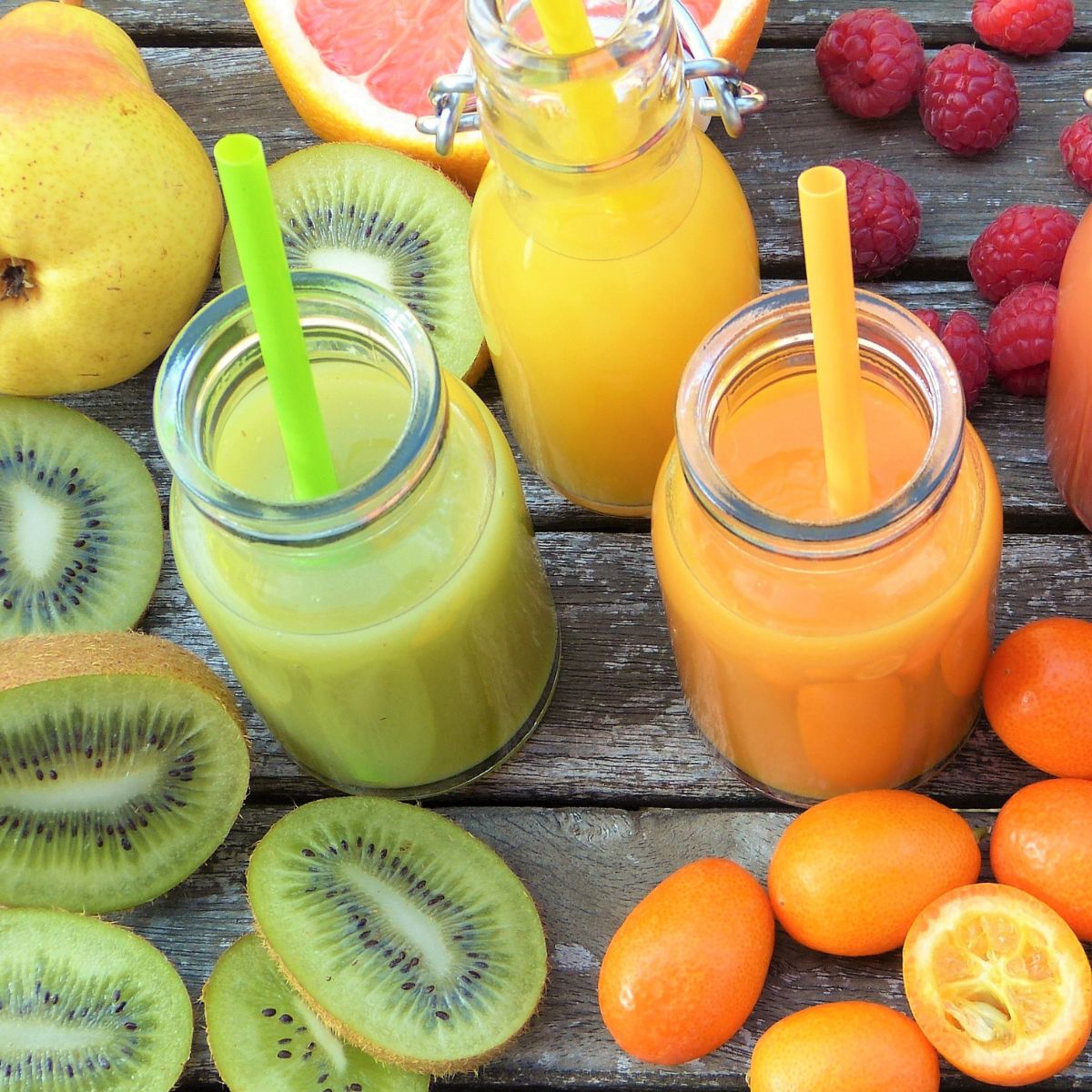

Fruit is often described as nature’s candy, an idea that some dieters take much more seriously than others. According to one popular online ketogenic diet resource[1], for example, “berries are fine in moderation, but it’s best to avoid other fruits.” One large apple or a medium-sized banana can tip the ketogenic dieter over the daily limit of recommended carbs, and dieters are warned to, “be careful with blueberries, because their carbs can rapidly add up.”
But the dietary guidelines encourage us to eat whole fruits.[2] A few years ago, an alarming study published by the CDC found that only 12 percent of adults ate the recommended servings of fruits.[3] “Men, young adults, and adults living in poverty” fare even worse according to the report. An excellent blog post by Michael Greger, MD, elaborated on research showing that inadequate fruit intake is the number one dietary risk factor, “responsible for an estimated 4.9 million deaths a year around the world.”[4]
What’s the truth about fruit? How does it affect our health, and what about more specific cases, like if we’re diabetic or trying to lose weight?
In a 2020 systematic review and meta-analysis published in the Journal of the American Medical Association (JAMA), researchers looked at the association between different fructose sources and the incidence of metabolic syndrome.[5] Sugar-sweetened beverages (SSBs) have been associated with an increased risk of metabolic syndrome, and the researchers wondered whether the same might apply to natural sources of fructose like fruit, as well as other food sources (yogurt, fruit juice, honey, etc.). It turns out that fruit has the opposite effect of SSBs: they are protective against the incidence of metabolic syndrome. (Incidentally, fruit juice was protective only at moderate doses.)
And what about the effects of fructose on the liver? Fructose has been associated, “with the severity of liver fibrosis in patients with non-alcoholic fatty liver disease,” but does that apply to fruit?[6] Researchers concluded: “The daily intake of industrial, not fruit fructose is a risk factor [emphasis added].”
Because not all fructose-containing foods are the same. The fructose in table sugar (sucrose, which is a combination of fructose and glucose) does not behave the same as the fructose in whole fruit; neither does the fructose in high-fructose corn syrup (the much-maligned liquid sweetener made from corn) behave the same as the fructose in whole fruit.

Research published in the British Medical Journal (BMJ) used data from the Nurses’ Health Study, “to determine whether individual fruits are differentially associated with the risk of type 2 diabetes.[7]” The hazard ratio (a measure of risk association) of type 2 diabetes for total whole fruit consumption was 0.98, suggesting not a risk but a slightly protective association between whole fruit and diabetes. When it came to individual fruits, greater consumption was associated with a lower risk of type 2 diabetes almost across the board. (However, greater consumption of fruit juice was associated with a higher risk.)
In another large study, involving 0.5 million Chinese adults, researchers investigated fresh fruit consumption’s effects on the risk of diabetes, plus the risk of death or vascular complications among already diabetic individuals.[8] Their conclusions supported the healthfulness of fruit: “higher intake of fresh fruit is potentially beneficial for primary and secondary prevention of diabetes… [And] for individuals who have already developed diabetes, restricted consumption… should not be encouraged.”
There is even evidence that consuming fruit in combination with sucrose (table sugar) results in a less severe insulin spike, in effect delaying the digestion of sucrose and slowing the absorption of glucose.[9]
I mentioned above that fructose has been associated with metabolic syndrome and weight gain. Research has also suggested that fructose can affect satiety;[10] in other words, it can interfere with our perceptions of fullness. This has led some to question whether all fructose-containing foods might lead to excessive intake of added sugars and weight gain.
One interesting study compared the effects of a low-fructose diet versus a natural moderate-fructose diet.[10] Compared to baseline, the low-fructose group lost weight, reduced blood pressure, improved inflammatory markers, and improved their quality of life scores. This is not especially surprising—given the option between a diet containing “processed fruit juices… sugar-sweetened soft drinks… pies, cakes, strudels, doughnuts… chocolate, candy” and a diet containing none of those things, the choice is clear: you’re better off without.
More surprising about the research findings was that the natural moderate-fructose group fared even better than the low-fructose group, losing more weight throughout the study. Again, the evidence indicates that not all fructose-containing foods are the same. Lumping fruit in with processed foods is not only inaccurate—it’s unhealthy.

When it comes to shifting toward healthier diets, there’s a good argument for not letting the perfect be the enemy of the good. If someone is committed to swapping out their Coca-Cola for 100% fruit juice, that’s a step in the right direction. And perhaps that’s why the Dietary Guidelines for Americans includes that 100% fruit juice can be counted toward the recommended servings of fruit.[2] Nevertheless, they do recommend that most fruit intake should come from whole fruit, and the evidence shared above supports this idea pretty consistently: the study in China referenced above included only fresh fruit, and the data from the Nurses’ Health Study found fruit juice associated with an increased risk of type 2 diabetes, despite nearly all whole fruits showing the opposite effect.[7][8]
Fruit is a good source of dietary fibre, minerals (e.g., potassium), and antioxidants (e.g., vitamins and polyphenols), which may work synergistically to confer several benefits on metabolism—including anti-oxidative, anti-inflammatory, anti-proliferative, anti-platelet, anti-hypertensive, anti-dyslipidaemic, anti-hyperglycaemic, and anti-atherogenic effects.[8]
If fruit is nature’s candy, then fruit juice is what happens when we divorce the “candy” from the “nature.” Of course, it’s not as harmful as actual candy, but it is missing several of the elements that make whole fruit healthy.
In a study comparing the effects of whole apples, apple pomace (the byproduct generated by juice manufacturing), clear apple juice, and cloudy apple juice on lipoproteins and blood pressure, researchers found lower LDL concentration following the consumption of whole apple, pomace, and, to a lesser extent, cloudy juice.[11] The primary difference between cloudy juice and clear juice is that the clear juice lacks water-soluble pectin (a type of fiber) and solid cell wall components. They conclude: “clear apple juice may not be a suitable surrogate for the whole fruit in nutritional recommendations.”
In another interesting study, researchers compared the nutritional content of grape juice byproducts—that is, the nutritional properties of the skins and seeds of two grape cultivars—depending on the juice processing method.[12] “Due to their high levels of anthocyanins and procyanidins, grape skins and seeds have higher antioxidant capacity than other fruit parts.” They conclude: “There is great potential for the development of nutraceutical products for this value-added market” (i.e., supplements).
You might wonder—I know I do—wouldn’t it be easier to eat the whole grape? “The development of nutraceutical products,” derived from grape juice byproducts, may be a great opportunity for a food technologist or a marketing team, but let’s not forget—Nature’s product is already here.
Copyright 2024 Center for Nutrition Studies. All rights reserved.